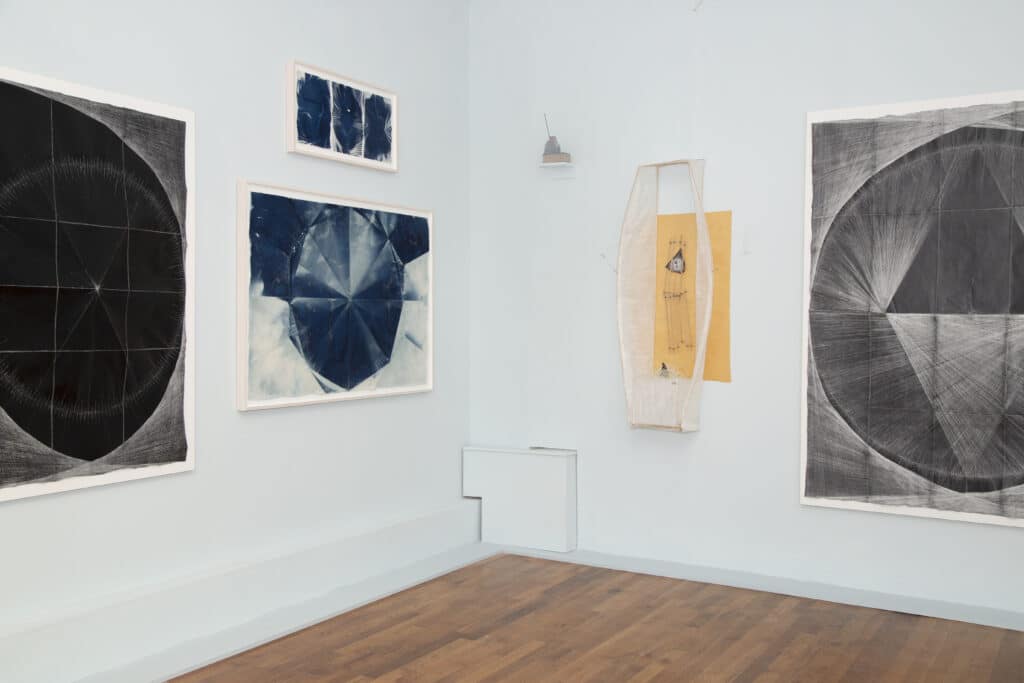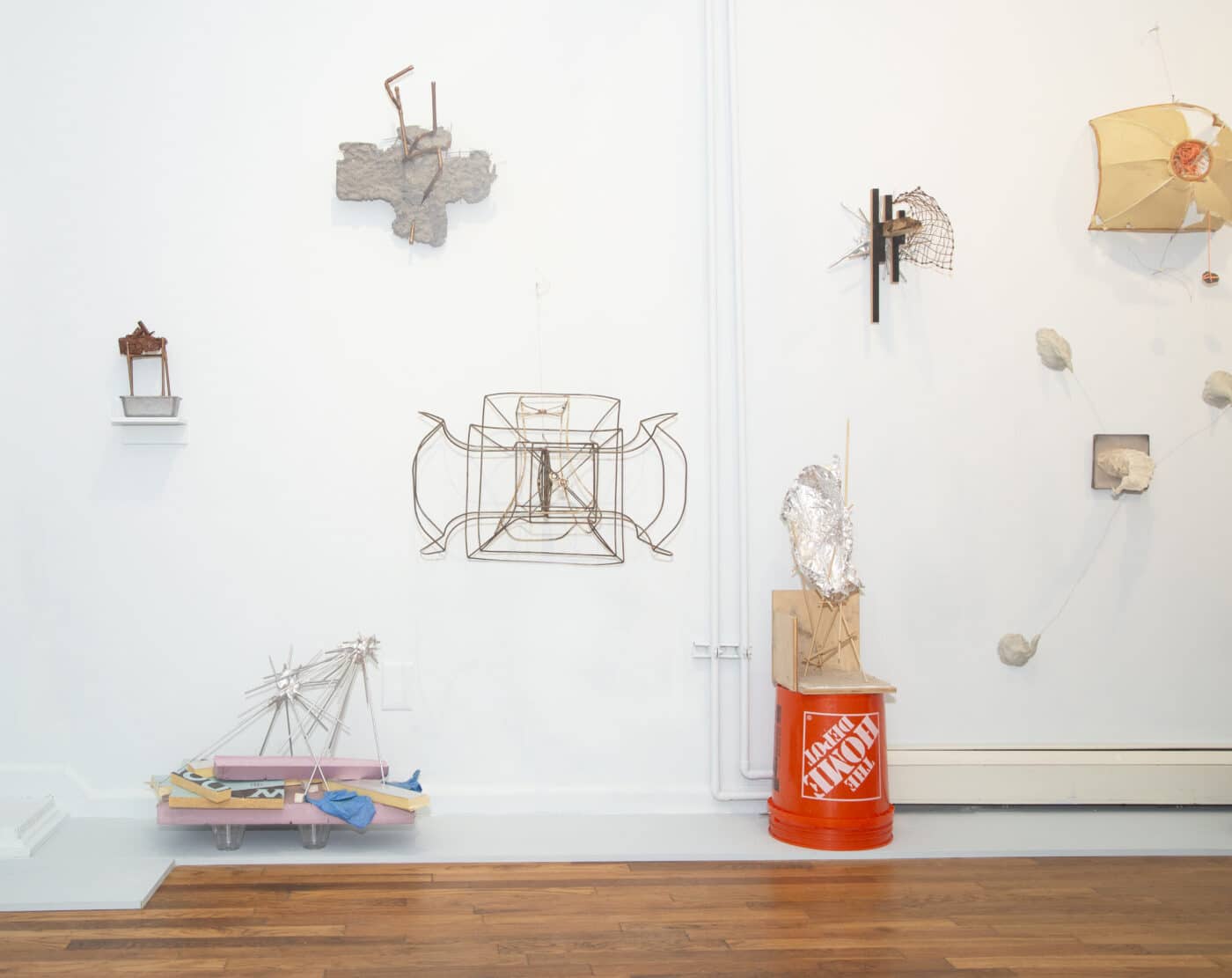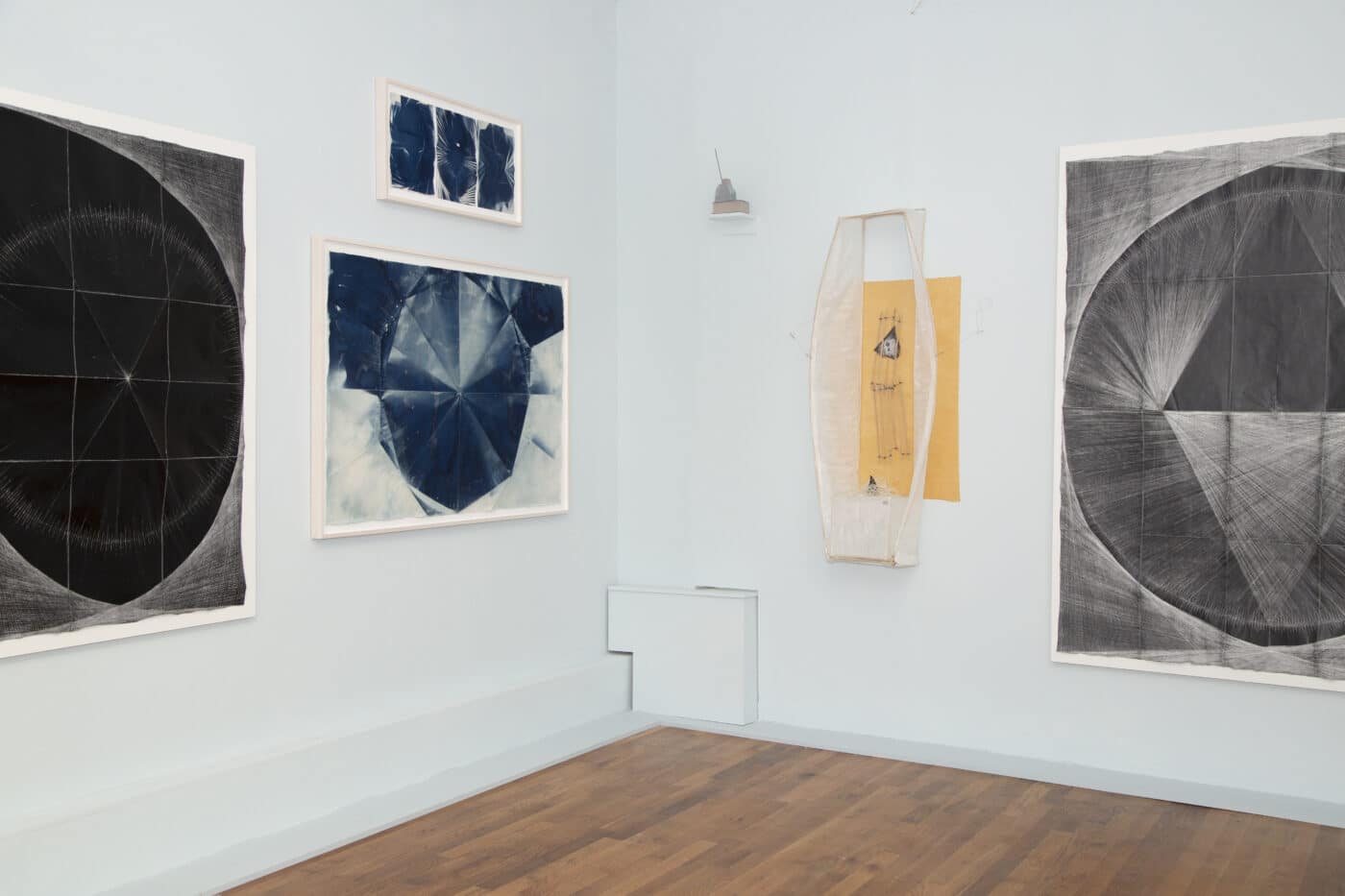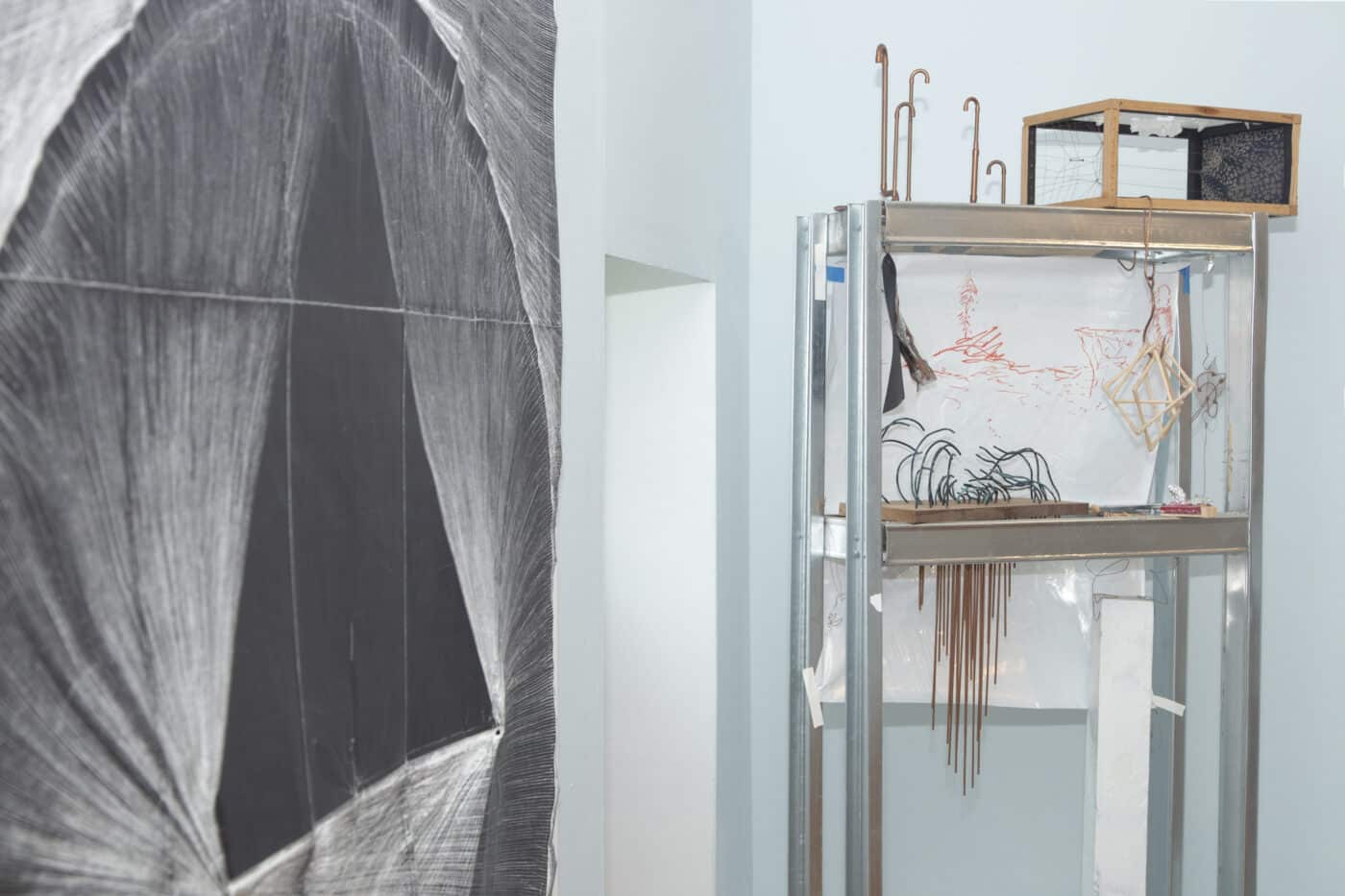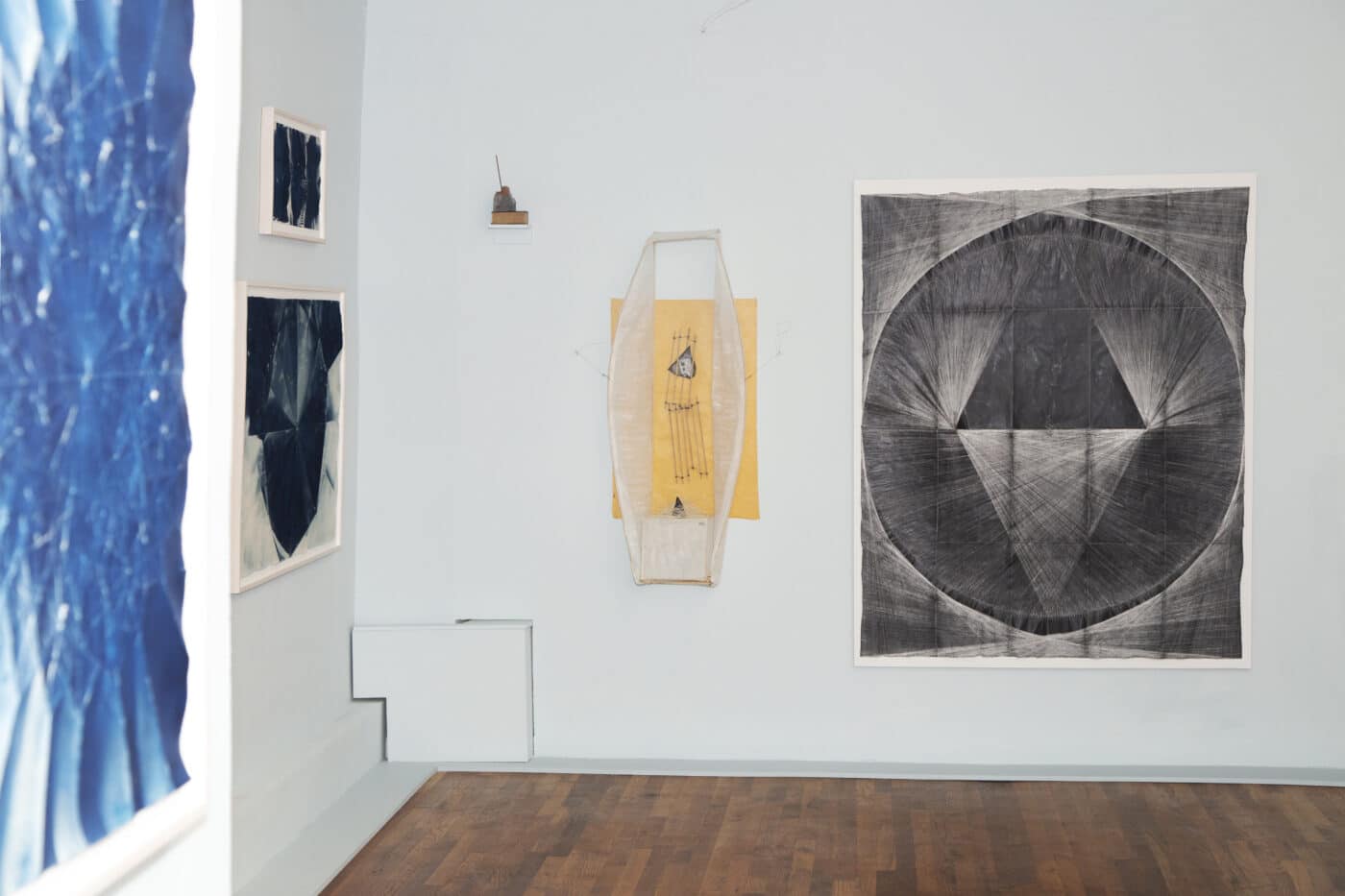Pollock’s deep interest in Moby Dick is seen through his admiration of Albert Pinkham Ryder (1847 – 1917) whose legendary work is associated with small-sized painting, yet in prolonged viewing experience, they loom infinitely large in scale. This shift in perception as a psychological condition is paired with Pollock’s own fascination with nature’s correlation between biological forms and mechanical phenomena, which ultimately led to his two-rare public remarks, “The only American master who interests me is Ryder” in the former, and “I don’t paint nature, I am nature” in the latter.
In both the works of Yasi Alipour and Cy Morgan, whose slow emergences as artists, have shared similar pictorial concerns, directly and indirectly, in how respectively scale and form can generate abstract images through their unusual making procedures in relation to their unorthodox uses of materials. For every object, if there is a transformation, including translating, scaling, rotating, etc., which outlines the figure/object onto itself, it has its own symmetry that is at once immune to change. Alipour’s perpetual references of Persian’s sacred geometry and drawing as a verb (through her incessant act of folding) has been a source of her negotiation of being in-between two cultures, one foot in her Iranian upbringing and the other foot in her current residence in New York City. Without ever surrender to any preconception to how each image would emerge as a priori condition, Alipour bisects the thin margin that lies between the intensity of her anxiety and the rigor of her deep knowledge of geometry by allowing the process of folding to generate the interplay between the light and dark that gives birth to the form in each work accordingly. In other words, whereas light, being the result of the creases from a predominantly black or blue surface, constituting the positive space, the unfolded-ground provides the necessary dark void or negative space. Together, they offer in each of the work a hard-won unity as a precarious co-existence.
On the contrary, Cy Morgan’s resistance to any symmetrical presentation, be it rectilinear or curvilinear, has consistently been an intrinsic motivation in his ambition as an artist from the outset of his career. The relentless pursue of giving life to form through its fragility and asymmetry rests on the delicate coalescence of his hand-made and other found objects. While the emphatic touch of the hand manifests in the handmade in the abstract, the found detritus that appeal to his conceptual eye anticipates their new functions, which is that of his pictorial exploration, not practical as they once were. By giving equal treatment to these two unlikely composites—the warmth of the hand and coldness of the found objects—Morgan in turn creating a palpable spatial tension in between them, hence fomenting his own distinct mediation with how things appear as images in relation to scale.
In this two-person exhibit, I’ve chosen two modest selections of their works in the last two years that testify the ongoing dialogue they have maintained ever since they met in 2014. I’m fascinated with their mutual convergence towards personal evolution as artists and friends. And while their tireless explorations on the various permutation of symmetrical and asymmetrical forms are both overtly and covertly visible, what they have in common is their share adherence to the fragility of forms as they come together or falling apart before our eyes. Thus, the notion of appearance vs. disappearance, durability vs. constancy, growth vs. decay is at once at the center of their deep inquiry of the nature of simultaneity on growth and form.
Phong H. Bui
Brooklyn, July 18, 2021
